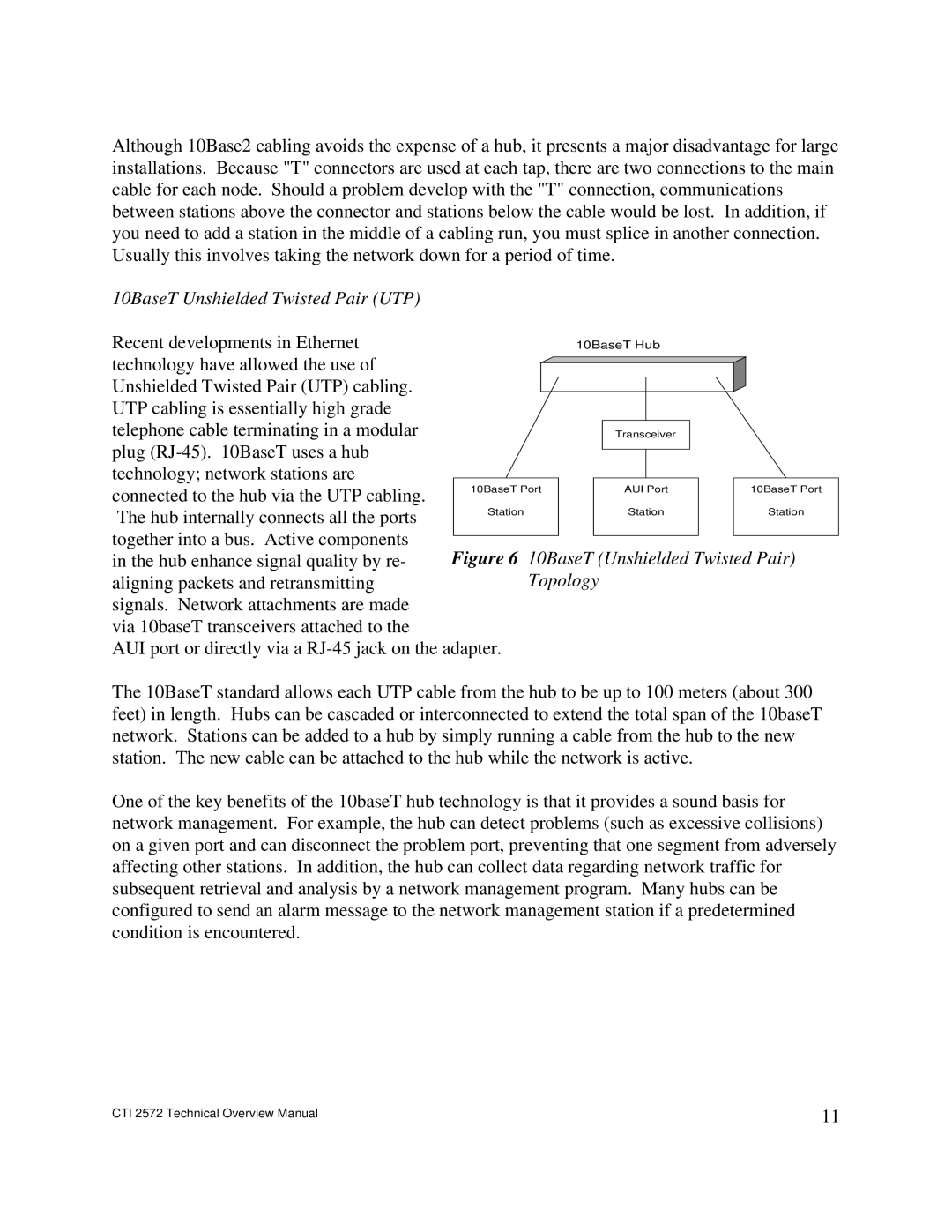
Although 10Base2 cabling avoids the expense of a hub, it presents a major disadvantage for large installations. Because "T" connectors are used at each tap, there are two connections to the main cable for each node. Should a problem develop with the "T" connection, communications between stations above the connector and stations below the cable would be lost. In addition, if you need to add a station in the middle of a cabling run, you must splice in another connection. Usually this involves taking the network down for a period of time.
10BaseT Unshielded Twisted Pair (UTP)
Recent developments in Ethernet technology have allowed the use of Unshielded Twisted Pair (UTP) cabling. UTP cabling is essentially high grade telephone cable terminating in a modular plug
in the hub enhance signal quality by re- Figure 6 aligning packets and retransmitting
signals. Network attachments are made via 10baseT transceivers attached to the
AUI port or directly via a
10BaseT Hub
|
|
|
|
|
|
|
|
|
|
|
|
|
|
|
| Transceiver |
|
|
| |
|
|
|
|
|
|
|
|
|
|
|
|
|
|
|
| AUI Port |
|
| 10BaseT Port | |
|
| Station |
|
| Station | |
|
|
|
|
|
|
|
10BaseT (Unshielded Twisted Pair) Topology
The 10BaseT standard allows each UTP cable from the hub to be up to 100 meters (about 300 feet) in length. Hubs can be cascaded or interconnected to extend the total span of the 10baseT network. Stations can be added to a hub by simply running a cable from the hub to the new station. The new cable can be attached to the hub while the network is active.
One of the key benefits of the 10baseT hub technology is that it provides a sound basis for network management. For example, the hub can detect problems (such as excessive collisions) on a given port and can disconnect the problem port, preventing that one segment from adversely affecting other stations. In addition, the hub can collect data regarding network traffic for subsequent retrieval and analysis by a network management program. Many hubs can be configured to send an alarm message to the network management station if a predetermined condition is encountered.
CTI 2572 Technical Overview Manual | 11 |
